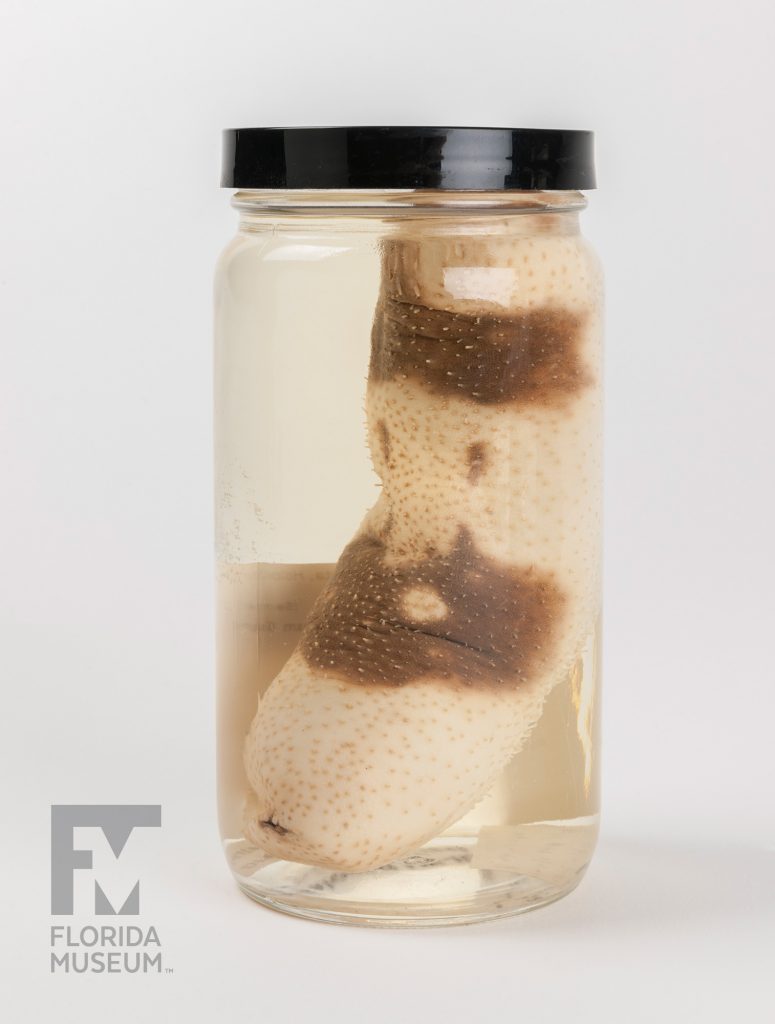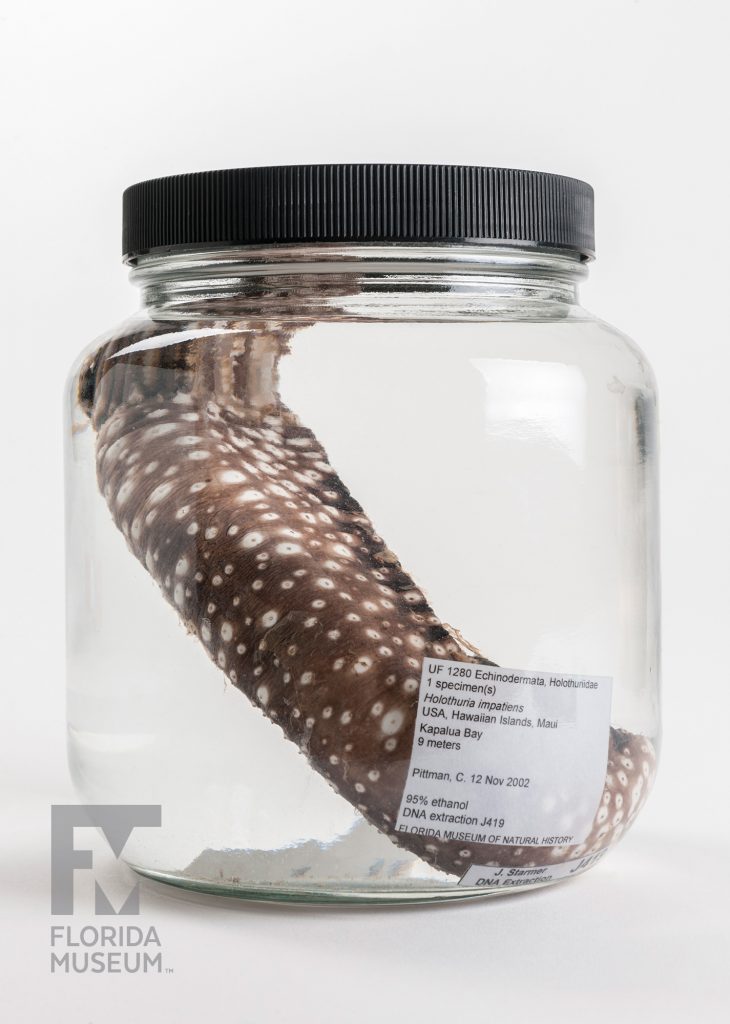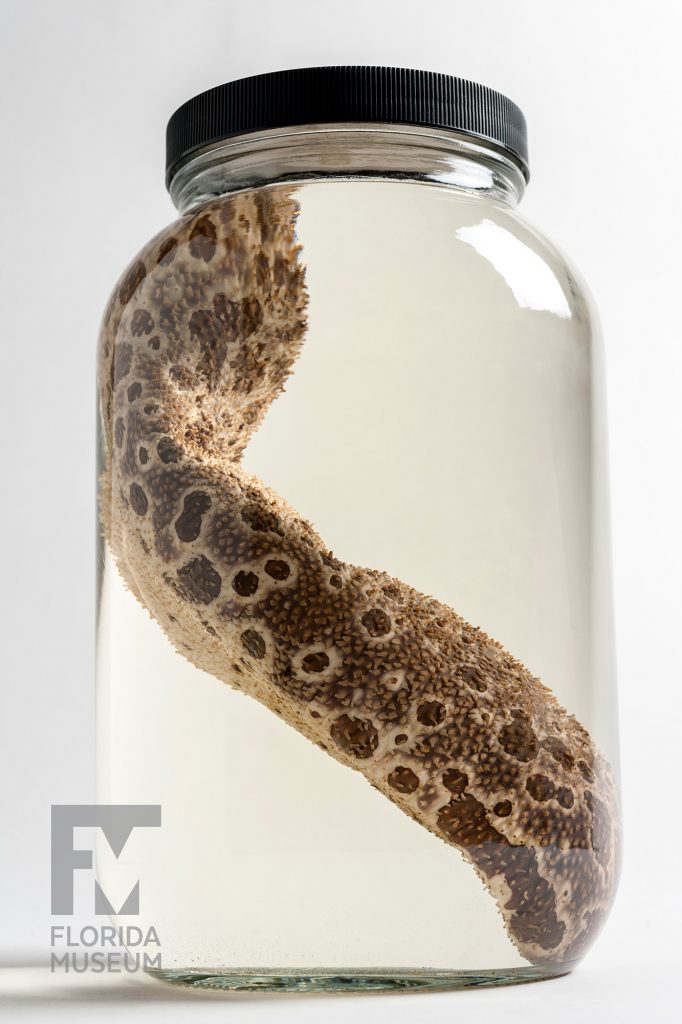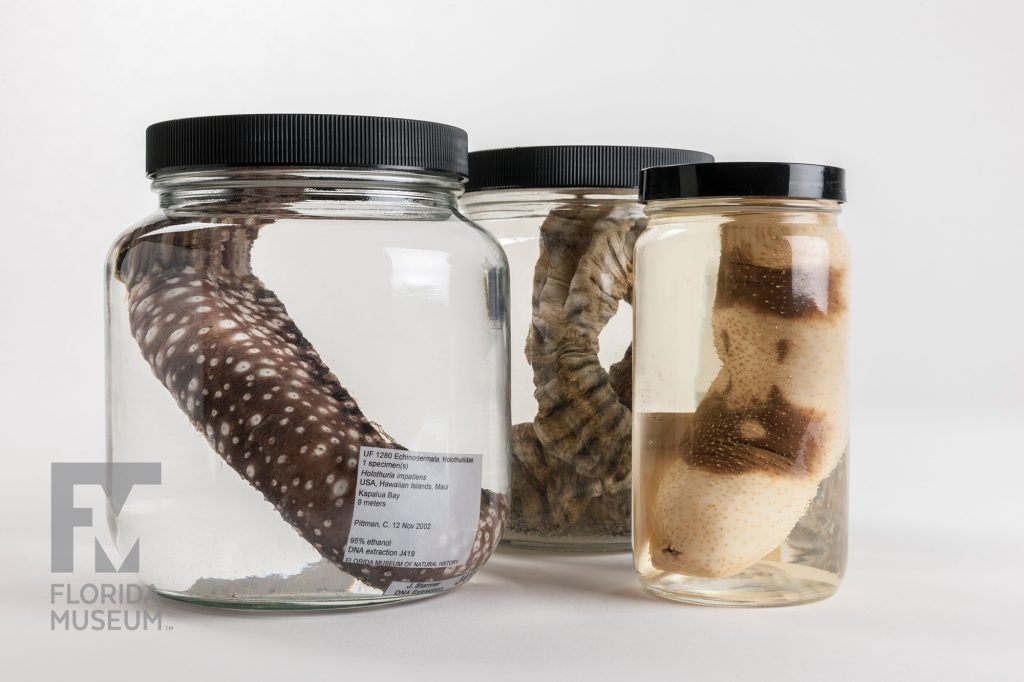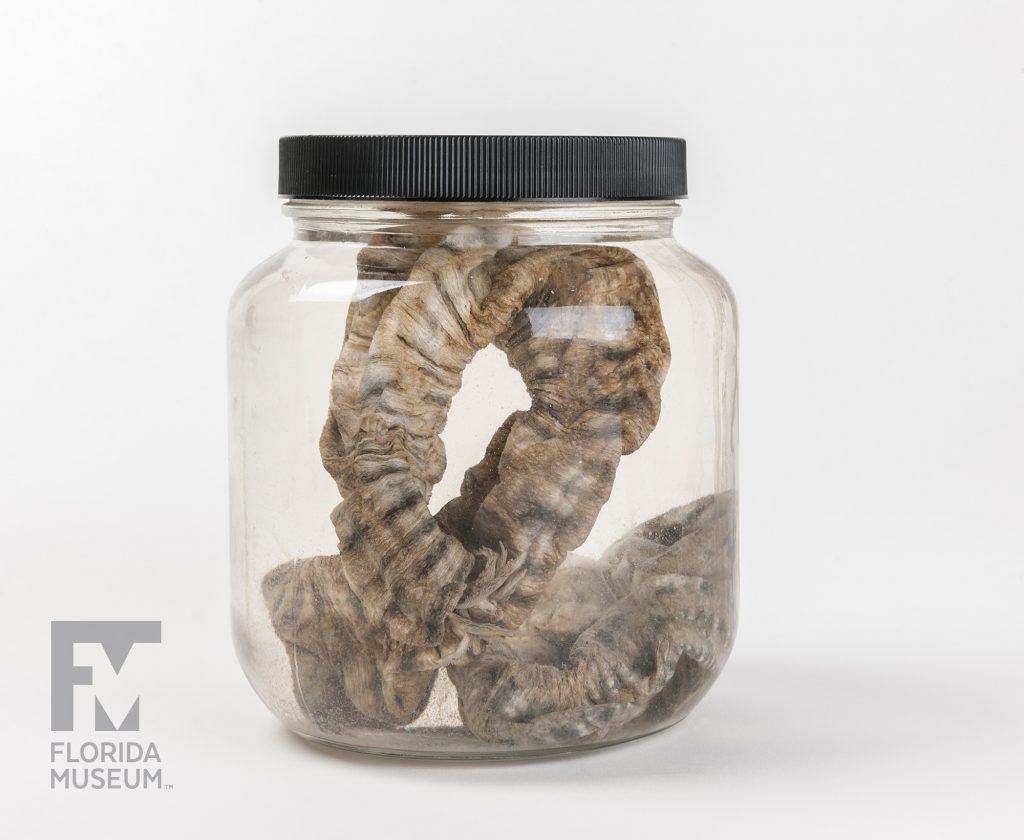Sea Cucumbers come in all shapes and sizes, and play an important role in marine ecosystems by recycling nutrients. Unfortunately, Sea Cucumber diversity is threatened by human consumption, as many cultures view them as a delicacy.
Summary
Sea Cucumbers (various species)
From the Indo-Pacific, early 21st century
Collection
Story
The Florida Museum of Natural History is a center of sea cucumber research and you might wonder why on earth anybody would spend a lot of energy studying these bizarre, weird-looking animals and there’s a couple of reasons.
One, they are one of the most valuable marine resources in the tropics. They are eaten, especially in East Asia, and fetch very high prices, and as a result many countries that are on tropical shores harvest them in large numbers. This has led to huge depletions of their populations and management crises, and of course a lot of colorful characters are involved in this bêche-de-mer trade.
In addition, their biology is fascinating. These are really bizarre animals. They are echinoderms; their closest relatives are sea urchins. You don’t see much of a sea urchin in these, but think about some of the oddities they do. For example, they can throw out their gut when they’re not happy and regenerate it. The entire intestine can be pushed out of the animal and left behind and a new intestine is grown. They breathe through their butt. They have a lung that opens through their anus and they breathe water in through their anus that dilates and pushes things in there, and — fishes live in this lung! Pearl fish will crawl in and out of the sea cucumber’s butt to live inside its water lungs.
If that was not enough, they have these bizarre tubes that they can expel — also through their butt — that elongate and become incredibly sticky, white, spaghetti-like threads and these will stick to anything that touches it, including you. It’s a really unpleasant experience to have yourself covered in this and try to pull it off your arm hairs, and of course if you happen to be a fish you’ll probably get so clogged up that you will die and suffocate as a result. So they are very well-defended animals and very successful until people started harvesting them for culinary purposes.
Gustav Paulay
Curator, Invertebrate Zoology*
Florida Museum of Natural History
Additional Information
Read: Rewriting the evolutionary history of sea cucumbers
Read: Scientists classify threatened sea cucumbers
Watch:
Exhibit
On display Sept. 23, 2017-Jan. 7, 2018, Rare, Beautiful & Fascinating: 100 Years @FloridaMuseum celebrated the Museum’s rich history. Each Museum collection was asked to contribute its most interesting items and share the stories that make them special. Though the physical exhibit is closed, this companion website remains online, providing an opportunity to experience the Florida Museum’s most treasured specimens.
Exhibit Area: Objects Tell Stories
Theme: Humans Cause Damage
 Want to see more? Explore more than 300 breathtaking color photos of plants, animals, fossils and cultural heritage materials from the Florida Museum of Natural History’s collections in the award-winning book All Things Beautiful available from the University Press of Florida.
Want to see more? Explore more than 300 breathtaking color photos of plants, animals, fossils and cultural heritage materials from the Florida Museum of Natural History’s collections in the award-winning book All Things Beautiful available from the University Press of Florida.
*This title was accurate at the time the exhibit was on display in 2017. Please visit the collection website to verify current staff and student information.
